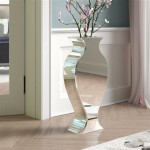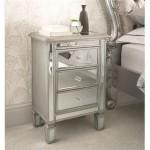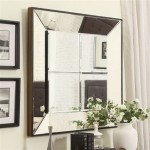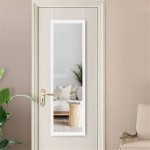Mirrored Wall Tiles: Enhancing Space and Style
Mirrored wall tiles represent a versatile design element that can dramatically transform the aesthetics and perceived dimensions of any room. From small bathrooms to expansive living areas, these tiles offer a unique blend of functionality and visual appeal. Their reflective surfaces create illusions of depth and light, making them a popular choice for interior designers and homeowners alike. This article explores the properties, applications, installation considerations, and maintenance requirements associated with mirrored wall tiles.
Understanding Mirrored Wall Tile Properties
Mirrored wall tiles are fundamentally glass tiles with a reflective coating applied to one side. This coating, typically composed of silver or aluminum, is protected by a layer of paint or other sealant to prevent corrosion and damage. The quality of the glass, the reflective coating, and the protective layer all contribute to the overall durability and performance of the tile. Different manufacturing processes and materials result in varying levels of reflectivity, clarity, and resistance to scratches, moisture, and chemicals.
The size and shape of mirrored wall tiles are highly variable. They are available in standard square or rectangular formats, as well as more intricate geometric shapes, allowing for diverse design possibilities. Larger tiles minimize grout lines, creating a more seamless and expansive appearance, while smaller tiles can be arranged in patterns to add texture and visual interest. The thickness of the tile also influences its structural integrity and ease of handling during installation.
The edge treatment of mirrored wall tiles is another important consideration. Beveled edges create a subtle three-dimensional effect and add a touch of elegance, while straight edges offer a clean, modern look. Polished edges enhance the tile's reflectivity and prevent chipping, while unfinished edges are typically used when the tiles are installed with grout.
Applications of Mirrored Wall Tiles in Interior Design
Mirrored wall tiles find application in a wide range of interior design projects, both residential and commercial. Their primary function is to enhance the perceived size and brightness of a space. This makes them particularly effective in small bathrooms, narrow hallways, and rooms with limited natural light.
In bathrooms, mirrored wall tiles are often used as a backsplash behind sinks or as a feature wall in showers. The reflective surface helps to bounce light around the room, creating a more open and airy feel. They also offer a practical solution for concealing imperfections in the wall surface. When used in showers, it is crucial to select tiles specifically designed for wet environments to ensure they can withstand prolonged exposure to moisture and humidity.
Living rooms and dining rooms can benefit from the strategic placement of mirrored wall tiles to create focal points and add visual interest. A carefully positioned mirrored wall can reflect a scenic view, expand the sense of space, or highlight an architectural detail. In commercial settings, such as retail stores and restaurants, mirrored wall tiles can be used to create dynamic displays, enhance the ambiance, and attract customers by making the space seem larger and more inviting.
Mirrored wall tiles can also be incorporated into furniture design. They can be used as inserts for cabinets, headboards, or coffee tables, adding a touch of glamour and sophistication to the piece. The reflective surface can also help to break up the monotony of solid surfaces and create a more visually stimulating effect. When using mirrored tiles in furniture, it is important to ensure that they are securely attached and protected from impact to prevent breakage.
Installation Considerations for Mirrored Wall Tiles
The successful installation of mirrored wall tiles requires careful planning and execution. Proper surface preparation is crucial to ensure that the tiles adhere securely and remain in place for years to come. The wall surface must be clean, dry, level, and free from any loose debris or contaminants. Any imperfections, such as cracks or holes, should be repaired before installation begins. The existing paint should be assessed for its ability to bond with applied adhesives. In some cases, it may be necessary to prime the surface to improve adhesion.
Selecting the appropriate adhesive is essential for a durable and long-lasting installation. The adhesive should be specifically formulated for use with glass or mirrors and compatible with the substrate material. It is recommended to use a neutral-cure silicone adhesive, as it will not damage the reflective coating on the back of the tile. The adhesive should be applied evenly to the back of the tile, using a notched trowel to create a consistent bond. The correct notch size depends on the size and type of tile being installed.
Accurate alignment and spacing are critical to achieving a professional-looking result. It is recommended to use spacers between the tiles to maintain consistent grout lines. The tiles should be pressed firmly into place and allowed to set according to the manufacturer's instructions. Any excess adhesive should be wiped away immediately with a damp cloth. Cutting mirrored wall tiles requires specialized tools and techniques to prevent chipping and cracking. A glass cutter or a wet saw with a diamond blade is typically used for this purpose. Safety glasses and gloves should be worn to protect against sharp edges and debris.
Grouting is an optional step, depending on the desired aesthetic. If grout is used, it should be carefully applied and cleaned up to avoid staining the mirrored surface. Epoxy grout is a durable and water-resistant option, but it is more difficult to work with than cement-based grout. The grout should be allowed to cure completely before the tiles are exposed to moisture or heavy use.
Maintenance and Care of Mirrored Wall Tiles
Maintaining the cleanliness and appearance of mirrored wall tiles is relatively straightforward. Regular cleaning with a soft cloth and a mild, non-abrasive cleaner is typically sufficient to remove dust, fingerprints, and water spots. Avoid using harsh chemicals, such as bleach or ammonia, as they can damage the reflective coating. Applying a glass cleaner specifically designed for mirrors can help to enhance the shine and prevent streaks.
For stubborn stains or grime, a solution of vinegar and water can be used. The solution should be applied with a soft cloth and then wiped dry with a clean, lint-free cloth. Avoid using abrasive sponges or scouring pads, as they can scratch the surface of the tile. It is important to dry the tiles thoroughly after cleaning to prevent water spots from forming.
Protecting mirrored wall tiles from impact and abrasion is essential to prevent damage. Avoid placing heavy objects near the tiles that could potentially scratch or chip the surface. If the tiles are installed in a high-traffic area, consider using a protective coating or sealant to reduce the risk of damage. Inspecting the tiles regularly for any signs of damage, such as cracks or chips, is important. Damaged tiles should be repaired or replaced promptly to prevent further deterioration and maintain the aesthetic appeal of the installation. If a tile becomes detached, a replacement can usually be re-attached using the same adhesive used during the initial installation.
Proper ventilation is especially important when mirrored wall tiles are installed in bathrooms or other high-humidity environments. Adequate ventilation helps to prevent the buildup of moisture, which can lead to corrosion and damage to the reflective coating. Regularly cleaning the grout lines between the tiles is also important to prevent the growth of mold and mildew. A grout cleaner specifically designed for bathrooms can be used for this purpose. Following these maintenance tips can help to ensure that mirrored wall tiles remain in good condition for many years.
The selection of mirrored tiles also impacts long-term maintenance. Tiles with a higher quality reflective coating and a more robust protective layer will generally require less frequent cleaning and maintenance. It is always advisable to invest in quality tiles, as they offer better durability and aesthetic appeal over the long run.

Mirrored Tiles Mirrorworld

Mirrored Diamond Wall Tiles Pack

Antique Mirrored Wallpaper Mad About The House

How To Use Decorative Mirror Tiles In Interior Design

Antique Mirror Tiles Glass

Mirrored Walls And Wall Tiles Pinesway Glass Ltd

Mirrored Tiles Mirrorworld

200x75 Bevelled Mirror Tiles Silver Mirrored Brick Shape Wall My Furniture
Antique Mirror Tile Retro Reflections

Abolos Reflections Silver Beveled Square 8 In X Glass Mirror Wall L And Stick Tile 4 Sq Ft Case Ghmref0808 Si The Home Depot








